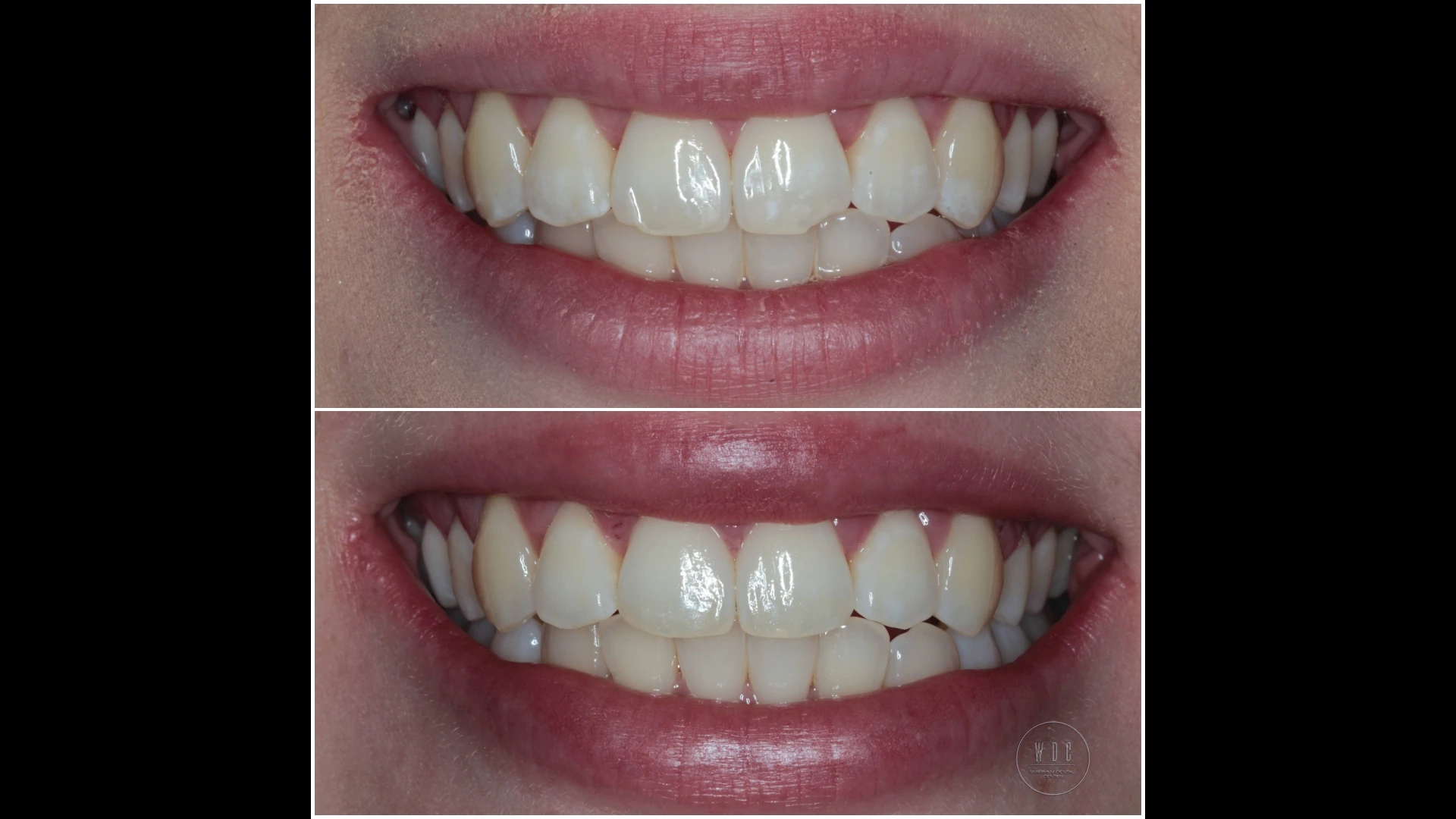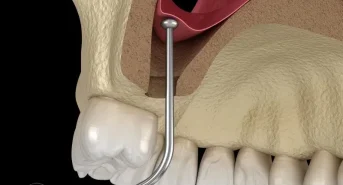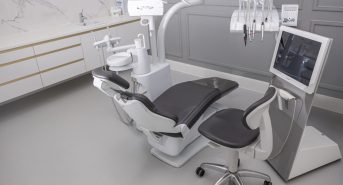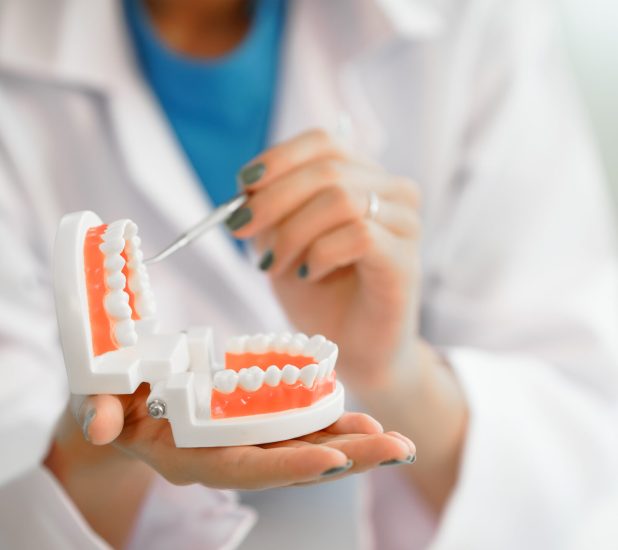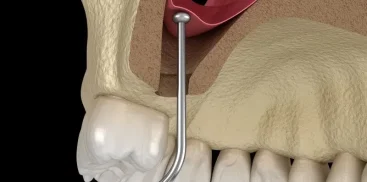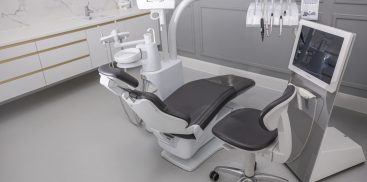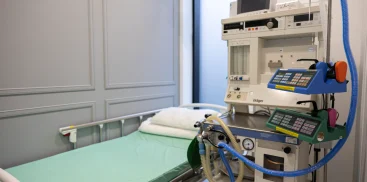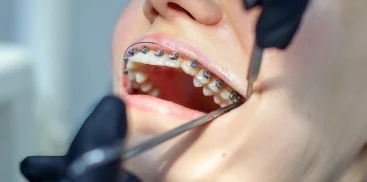Dr Natalia Rogulska patient success story
Composite veneers, also known as dental bonding, are a method of tooth restoration often used as an alternative to ceramic (porcelain) veneers. We asked our team of top specialists in Warsaw, including Dr. Natalia Rogulska, questions to familiarize you with the topic of bonding.
What is Tooth Bonding?
Tooth bonding is a minimally invasive procedure aimed at improving the aesthetics of one or more teeth using composite material. It is worth emphasizing that these composites perfectly mimic the structure of tooth tissues, consisting of precisely combined various chemical components.
What are the Advantages of Bonding?
According to Dr. Natalia Rogulska, one of the advantages of composite veneers is their excellent match to the patient’s natural tooth color, resulting in a harmonious, stunning effect.
Dental bonding is gaining increasing popularity due to its high level of aesthetics and quick execution. Another advantage is the significantly lower cost compared to traditional ceramic (porcelain) veneers, making this method more economical.
When to Consider Dental Bonding?
We asked the top doctors from the heart of Warsaw – Warsaw Dental Center. The most common indication for this procedure is surface damage to the crown, especially various types of cavities, chips, or cracks. In the case of minor damage, instead of using a crown or veneer, a special composite material can be applied, which bonds with the hard tissue of the crown, adhering perfectly to it. Dental bonding can also be performed for aesthetic reasons, such as discoloration of individual teeth or minor differences in their length or width. The procedure is also used for diastemas and to eliminate gaps between teeth.
Dr. Natalia Rogulska emphasizes that the procedure does not require intervention in the natural structure of the teeth. This makes it a reversible procedure, recommended for individuals who have not yet decided on a permanent solution or currently cannot afford porcelain veneers. The procedure is entirely safe, painless, and simple to perform, as confirmed by numerous procedures conducted at Warsaw Dental Center and the smiles of many satisfied patients from Warsaw and all over Poland. This is a significant advantage for those who cannot or should not use anesthesia at the moment. However, it is worth remembering that dental bonding is not as durable as veneers or crowns, so it may need to be repeated every few years.
What are the Effects and Durability of Bonding?
Using composite material restorations can be an alternative to veneers. This method is not as durable as a porcelain veneer but allows for gentle modification of the shape and appearance of teeth. Bonding allows for concealing minor chips and other mechanical damages without the need for grinding the crown, as required when using porcelain veneers. The effect is not permanent. Over time, teeth may get damaged, discolored, and lose their initial appearance. Regular check-ups are essential to maintain the effect of the procedure. At Warsaw Dental Center, we estimate the lifespan of composite material restorations to be around three to five years.
Bonding vs. Whitening
Bonding is often confused with whitening. The difference is that with whitening, teeth are lightened using a chemical preparation. With bonding, the shade of the tooth can only be minimally changed by applying a layer of composite material. To achieve a more significant color difference, a much thicker layer of material would be needed, which would give an unnatural effect. It is worth noting that dental bonding is most often used on individual teeth that have been damaged or have permanent discoloration, while whitening is applied to all teeth.
Contraindications for Dental Bonding
To perform the procedure, the teeth must be free of decay, and the periodontium should not show signs of inflammation. Special caution should be exercised with patients with bruxism, as uncontrolled grinding or clenching of teeth can significantly affect the durability of the effect. Such patients should be provided with a special protective splint and frequent check-ups. For patients who smoke, due to the risk of discoloration, veneers are recommended. Before the procedure, we recommend consulting one of the experienced doctors at Warsaw Dental Center, who will assess the condition of the oral cavity and discuss possible contraindications.
Bonding vs. Veneers
When choosing a method of tooth restoration, it is essential to consider that the final decision at Warsaw Dental Center always belongs to the patient. However, it is recommended to listen to the doctor’s opinion.
For young patients whose teeth are healthy, the bite function is preserved, and the goal is only to improve minor aesthetic flaws, bonding can be an effective solution. In the case of comprehensive restoration of damaged teeth, it is worth considering investing in porcelain restoration, which provides more spectacular and lasting results.
Cost of Bonding in Warsaw
At our Warsaw clinic, the cost of bonding is one thousand złoty per tooth. During the consultation, the doctor thoroughly explains the entire procedure, assesses the condition of the teeth, and determines the cost based on the number of teeth on which the procedure will be performed.
Article written on January 01, 2024 and updated on June 30, 2024 based on the latest technology and research.
